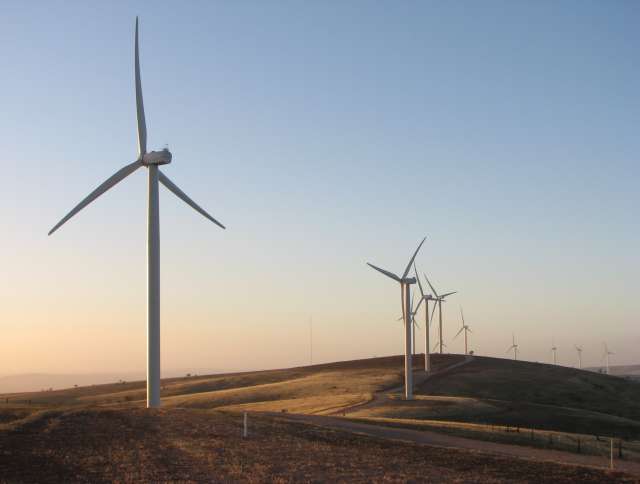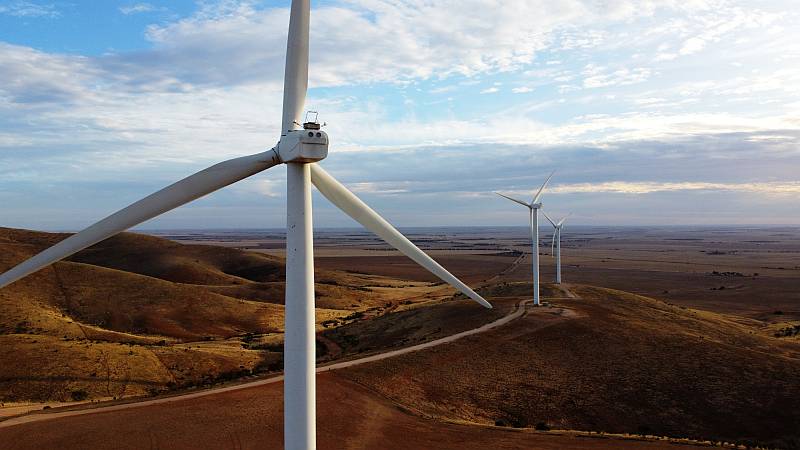My wife and I took part, as subjects in the university laboratories, in the Flinders University Wind Farm Sleep Study from 2020/03/10 to 2020/03/18.
The study involved we subjects listening to many 'recordings' of sounds from wind farms, from road traffic and elsewhere.
Some of the recording were included in 'listening tests' and some were played at low levels while participants slept.
The 'listening tests' involved us listening to a number of recorded sounds over a period of about 45 minutes and adjusting the volume of the sound to a level low enough to not disturb our sleep.
Many readings were taken of neurological and bodily functions during the many tests and through the whole of the night.
I need to say that the staff and students involved in 'wiring us up' and going about the regular testing evening, night and morning were very kind and helpful.
My wife and I were allowed to go to sleep at about the times we stated were our usual times, and we were allowed to finally wake in the morning when it suited us.
Some sounds were played at times through all but the first night.
While I was at times aware of some of these sounds, I don't recall being actually fully awoken by any of these (it is possible that I was partly awoken, but not enough for me to be fully aware that a sound had disturbed my sleep).
Nor do I recall finding it difficult to get back to sleep due to sounds on any of the occasions I awoke through the night.
The above is my recollection of my perceptions at the time.
The record from my brain activity in relation to the sounds being played may well show a somewhat different picture.
My wife tells me that she doesn't recall being woken by a sound, but she thinks that sometimes there were sounds that made it somewhat difficult to get back to sleep.
I should add that I don't recall, with the possible exception of once in the second night of the test, hearing during sleep the 'drumming' sound that featured so strongly during the 'listening tests' and discussed
below.
| |
|
Recording
In regard to sound recordings I've sometimes placed the word recording in parentheses, because I'm not convinced that the sounds were recorded rather than being fabricated.
|
|
|
|
|
After the my involvement in the live-in part of the sleep study I twice asked Professor Peter Catcheside, one of the principle researchers, where I might be able to go to hear the 'drumming' sound that is so prominent in the study 'recordings'.
He did not tell me.
Acousticians (specialists in sound) sometimes speak of
'room modes', which are sounds that happen to match and be amplified by the natural resonant frequency of a particular room.
(While I have
slept in several rooms near wind turbines I have never heard them.)
Is it possible that the 'drumming' sound so commonly played during the 'listening tests' is a recording of a rarely heard 'room mode' sound?
|
|
|
|
|
While at the University I asked for a copy of a representative group of the sound files used in the 'listening tests'.
I was given four files, but when I attempted to play them on my computer there was only silence.
Of course I would like to have a copy of the sound files because, without that, I only have my notes and recollection of the sounds that were played to me during the study.
Am I being paranoid in thinking that the files might be changed now that I have complained about what seems to me to be misrepresentation of wind farm noise?
| |
A high proportion of the 'recorded' wind farm sounds that were played during the 'listening tests' each evening included, with the typical and characteristic 'swishing' sound of wind turbines, a very unpleasant noise that I have never heard at a wind farm and that I find difficult to describe.
I've called it a 'drumming' sound, although I'm not very happy with that name.
Other comparison sounds, such as traffic sounds, were played during the 'listening tests'. It was the frequent association of the unpleasant 'drumming' sound with wind farm sounds that, it seems to me, is likely to bias subjects' impressions, and the results, against wind farms.
The best description I can think of for the 'drumming' sound in the sleep study is what you would expect from a base drum that is made to vibrate by something hitting it somewhere around 30 times per second.
Other similar sounds would be the 'thumping' sound from a helicopter or the engine brakes of a truck, although, of course, the pitch of the sound from engine brakes decreases as the truck slows and it goes on for only a few seconds.
The 'drumming' sound in the 'recordings' had a pitch that didn't vary.
Our heads were wired-up with transducers for electroencephalographic recordings and our chests for cardiovascular recordings during the 'listening tests'.
It would be very interesting to know the results of these recordings at the time of the playback of the highly unrealistic 'wind farm sounds'.
I seem to recall that, at least sometimes, the intensity of the 'drumming' sound rose and fell with the volume of the characteristic wind turbine 'swishing' sound.
I have visited dozens of wind farms on hundreds of occasions and I have never heard a sound remotely like the 'drumming' in the Flinders University study.
I kept a record of the types of sounds I heard during the later of the 'listening tests'; during the first (and second?) 'listening test' I was simply shocked at hearing such sounds supposedly associated with wind turbine sounds.
As an indication of how commonly the 'drumming' sound was included in the sounds heard during the sleep study I've given here a summary of my notes taken on the evening of 2020/03/13.
Of a total of ten sounds, each of which lasted three minutes:
- Three included quite distinct and unpleasant drumming, one other included slight drumming;
- One was the typical 'swishing' sound that anyone can hear when visiting a wind farm;
- One might have been described as a low 'rumbling' (the sounds coming from many turbines, so lacking any dominance from one or two nearby turbines);
- One was 'swishing' with the background sound made up by a number of, presumably, more distant turbines;
- Two were of traffic noises;
- One was of a very quiet, short, beep, beep, beep which continued for the whole three minutes of the sound bite (I can't imagine its relevance to the study).
An earlier 'listening test' included what sounded like a wind turbine with squeaking bearings.
I've never heard this, but believe there was a problem with squeaking bearings in some of the
Cape Bridgewater turbines about 2014.
Between the 'drumming' and the squeaking bearings one cannot help getting the impression that the person or people in charge of this investigation went to great lengths to find unpleasant noises from wind turbines, when I would have thought they should be looking for typical wind turbines sounds.
I have summarised other 'listening tests' in the
appendix.
It should be a matter of great concern to any honest person that all the participants in the sleep study, by taking part in the 'listening tests', are getting the impression that unpleasant sounds from wind turbines are typical, when in fact, if they occur at all, they are very rare; I can honestly say that I do not recall ever hearing what I would call an unpleasant sound from a wind turbine.
When, while a participant in the study, I voiced my grave concerns about the validity of many of the sound bites in the 'listening tests' I was asked to not make public statements of my concerns because it might produce preconceptions in future participants that would then impact the results of the trial.
Surely the sound 'recordings' that participants are hearing, of sounds that are never heard in the field, are already corrupting the trial.
During sleeping on the second night sound-bites were played periodically.
Some of them were associated with wind farms, some not.
I felt that it was not at all a realistic simulation of living near wind turbines because the sounds started suddenly out of complete silence and ran for a short while and then complete silence was back.
Of course if a sound starts suddenly at night one is likely to be startled out of sleep.
In the real world any perceived sound from wind turbines would be likely to vary only gradually in volume as the direction and strength of the wind changed.
Wind turbine manufacturers go to great lengths to make turbines as quiet as possible.
On the other hand many people buy motorbikes that are much more noisy than they need to be, others get their motorbikes and cars modified to increase the amount of noise they make.
Many people damage their hearing by going to rock concerts and playing very loud 'music' in their cars, homes and through their earphones.
Other man-made noises in the modern environment that are far louder than wind turbines but get less attention are from airports, railway lines and road traffic.
Even the sound in a car travelling on a highway is hundreds of times louder than the sounds from a wind turbine at the distance of the closest houses.
Wind turbine noise is usually barely audible at the distance of the nearest houses, often inaudible. It is true that wind turbine sounds might annoy a few people; traffic sounds annoy a great many people. Wind turbine sounds are minimised, traffic sounds are quite intentionally more noisy than they need to be and rock concerts are damaging the hearing of many of our younger people.
Yet our (fossil fuel obsessed) federal government is providing many millions of dollars to fund studies like this one. Surely the money and the researcher's time would be better spent if it was on studies of the harm that is quite definitely being done to people's hearing and the annoyance from vehicles that have been intentionally modified to increase the environmental noise that we all have to put up with.
We need renewable energy if we are to limit the disaster of climate change, we don't need noisy vehicles or levels of 'music' that damage people's hearing.


